RARA Calling - Natural & Pristine Perfection
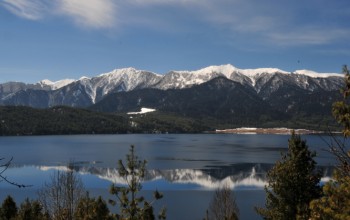
The best way to enjoy a trip to Rara is to be an eco-traveler. The perfect beauty of the lake and its surroundings in unmatched compared to other destinations of Nepal.
Rara Lake may feel like a dreamland to many. Its iridescent and pristine waters can be compared to the beauty of a goddess. This not so secret-secret destinations is located in Mugu District in Karnali province of western Nepal. To promote local tourism to Karnali, Government of Province 6 has pledged the New Year 2075 as Karnali-Rara Tourism Year. The campaign was inaugurated by Prime Minister KP Oli on 1st Baisakh 2075 at Rara Lake.
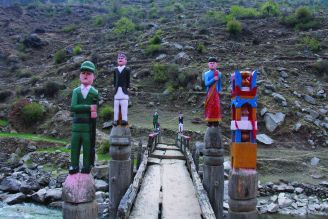 There are three main ways to reach Rara - by air, by road or by trekking. Trekking to Rara takes about 3 days starting from Jumla. The trekking route is well facilitated with homestays and restaurants. If you opt to go by road, you drive to the border of Rara National Park. From the park, it takes about 40 minutes to reach the lake. Taking a flight from Nepalgunj or Surkhet will take you to Talcha. Then, it's a two-hour drive to reach Rara. Note that flights from Nepalgunj to Talcha are irregular.
There are three main ways to reach Rara - by air, by road or by trekking. Trekking to Rara takes about 3 days starting from Jumla. The trekking route is well facilitated with homestays and restaurants. If you opt to go by road, you drive to the border of Rara National Park. From the park, it takes about 40 minutes to reach the lake. Taking a flight from Nepalgunj or Surkhet will take you to Talcha. Then, it's a two-hour drive to reach Rara. Note that flights from Nepalgunj to Talcha are irregular.
The best way to enjoy your trip to Rara is by taking this 6-day travel package we've outlined:
Day 1: An early morning direct flight from Kathmandu to Surkhet takes about an hour or so. You can enjoy your time in 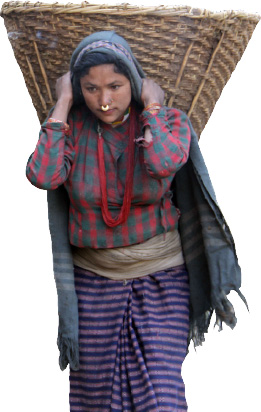 the air by watching the splendor of Nepal's beautiful Himalayas go by. As the regional capital of province no.6, Surkhet has good facilities like hotels, hospitals, and academic institutions. There are many attractions to explore Surkhet like Bulbule Lake, Kakrebihar, and Deuti. It is best to explore these places at leisure when returning from Rara.
the air by watching the splendor of Nepal's beautiful Himalayas go by. As the regional capital of province no.6, Surkhet has good facilities like hotels, hospitals, and academic institutions. There are many attractions to explore Surkhet like Bulbule Lake, Kakrebihar, and Deuti. It is best to explore these places at leisure when returning from Rara.
Once you land at Surkhet, take a 20 km jeep ride to Guranshe and stop for an authentic Nepali meal of Dal Bhat. Guranshe is so named after the blooming rhododendrons known as Gurans in Nepali. It is a small hill station of Dailekh district. It is a good place to get away from boiling temperatures of Surkhet. During the Nepali months of Chaitra and Baisakh (March-April), this region is covered in colorful rhododendrons.
After lunch, drive towards Kalikot Headquarters, which takes about 7 hours from Guranshe. The drive takes you through several winding roads and inclines. As these roads were only recently constructed, you can get glimpses of the harsh living conditions of the people as you drive by several houses.
The Karnali highway is graveled and easy to drive in. There are some areas where road construction is ongoing. Travelers can use either two-wheelers or mico buses to get to Rara, but the most comfortable ride is on a jeep.
Spend the first night in Manma, which has several hotels to choose from.
Day 2: Start the day early and head out to Salleri. The journey will take 9 hours on a jeep from Manma. The road starting from Nangmaghat is a graveled road, so make sure to embrace for the impact. After passing Nangmaghat, you will reach Sinja Valley, where you'll stop for lunch. Sinja is a surreal place with traditional houses made from mud and stone walls and roofs. It's a good plan to buy food and water here before you heading out to the national park.
The entrance to Rara National Park is at Salleri . Vehicles are not allowed within the park without permission. Rara Lake is a 40 minutes' walk from the entrance. There are few hotels located in Salleri. If you wish to stay in accommodations closer to the lake, a two hour walk is required.
An alternative to walking towards the lake is to hop on a horse and go horse riding, which would cost Rs.1200. As the path unwinds itself from the forest to reveal the lake, you will find yourself in full awe of its beauty. During the summer months, the path through the jungle becomes even more enjoyable as wildflowers carpet the forest floor with colorful blooms. While there are no hotels in Milichaur, the banks of Rara Lake, there are hotels located away from the banks, which are Danfe Hotel and Village Heritage and Resort.
Rara is an asset is of nature that mesmerizes any visitor. It's sparklingly blue waters with the Himalayan peaks in the distance make this place a haven for any nature enthusiast. You can also find a canteen run by the Nepal Army and the park's office is located near the banks of the lake.
Murma Top
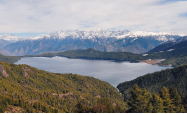 If you wish to enjoy an unobstructed view of the entire Rara Lake, Murma Top is the place to be. Located to the south-west at a height of 3,726 meters, it takes a short hike of 3 hours to reach there. There are two trails leading to Murma Top. One goes through Murma Village while the other passes through the shrine of Chapru Mahadev. The best route to hike is passing through Murma Village when heading up, and visiting Chapru Mahadev when returning back.
If you wish to enjoy an unobstructed view of the entire Rara Lake, Murma Top is the place to be. Located to the south-west at a height of 3,726 meters, it takes a short hike of 3 hours to reach there. There are two trails leading to Murma Top. One goes through Murma Village while the other passes through the shrine of Chapru Mahadev. The best route to hike is passing through Murma Village when heading up, and visiting Chapru Mahadev when returning back.
Murma Village has around 80 houses that belong to Rokaya caste. Be sure to stock up on food and water before heading out to Murma Top. You have to plan to stay for the night inside the park if you want to trek to Murma Top.
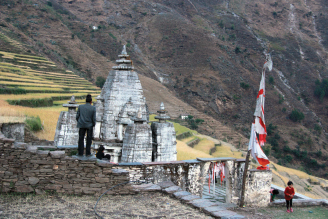 Day 3: Get up early and catch the sunrise at the lake. Enjoy leisure activities like walking around the lake or horse riding. Get your cameras ready to capture the glimmering peaks of Chhayanath and Rinmoksha with the shimmering Rara Lake in the morning glow. The morning is also a great time to witness the iridescent lights reflecting through Rara Lake's waters. The colors seem to be ever-changing with the rays of the sun.
Day 3: Get up early and catch the sunrise at the lake. Enjoy leisure activities like walking around the lake or horse riding. Get your cameras ready to capture the glimmering peaks of Chhayanath and Rinmoksha with the shimmering Rara Lake in the morning glow. The morning is also a great time to witness the iridescent lights reflecting through Rara Lake's waters. The colors seem to be ever-changing with the rays of the sun.
Bask in the glory of the lake and enjoy a boat ride. Swimming or bathing in the lake is prohibited. Make sure to have an early lunch and then head out for a boat ride in the lake's calm waters to the other edge of the water at Milichaur. From Milichaur, head towards Salleri on a horse or take a walk. You can also find park exits at Majhghat, Lamachaur and Talcha, where hotels are located nearby.
Catch a jeep in Salleri and head towards the same route to Sinja. Once you've reached Sinja, visit the Pandav Cave. It is believed that this cave is where the Pandav princes from the tale of Mahabharata lived when they were exiled from their palace. The cave used to have old statutes of the Pandavs, but the idols were stolen. It has been restored with new ones.
From Sinja, follow the same route to Nangma and Manma and make your way towards Jumla bazaar. The distance from Nagmaghat to Jumla covers 32 kilometers. The Chandannath and Bhairab temples are located farther from Jumla bazaar so enjoy shopping for the day and rest at the hotel. Some of the specialties to buy in Jumla bazaar are organic spices like jimbu, local vegetables, Marsi rice and dried apple treats.
Day 4: Begin your day by visiting Chandannath and Bhairab Temples. Then make your way towards Dailekh, where you will find the Panchadewal Temple en route Manma. Panchadewal Temple has five historical artistic stone statues which are dedicated to Lord Narayan.
To get a taste of the local cuisines, the highway offers an array of places which has a line-up of cuisines. At the highway junction, try the local wheat roti and fish gravy prepared with a local twist. Stop for the night at Dailekh.
Day 5: Dailekh is considered a heritage rich place like Kathmandu and Lumbini. Start your day by visiting historical sites like Panchakoshi and Dullu. You can also find Kirtikkhamba and Damupal which have stones believed to have the first inscriptions of the Nepali language. Kirtikkhamba was erected in 1279 A.D by King Prithivi Malla. This stone has inscriptions of his royal lineage.
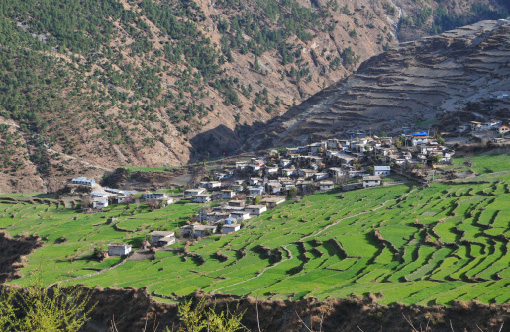 Sinja Valley
Sinja Valley
The Sinja Valley is believed to be where Nepali language began. The first traces of Nepali language were discovered in this region. Established by a Khas King Nagraj, this is where the Khas ethnicity emerged. The kingdom was ruled by the Khas for 400 years until 1842 B.S when Nepal was unified.
Sinja was the capital of the Khas kingdom while Dullu located in Dailekh was the capital of Shitakalin. These capitals carry important historical evidence and you can find historical artifacts in the area like ancient ruins, courtyards, temples, and shrines. Unfortunately, lack of proper preservation techniques has brought these artifacts to the verge of destruction.
At Panchakoshi, you will find religious temples such as Shirshthan, Navisthan, Padukasthan, Dhuleshwor and Kotilasthan. Panchakoshi is believed to be as holy a site as India’s Gaya. At the shrines of Shirsthan and Navisthan, you will find a fire that burns from natural, underground gases. As it is an eternal flame, devotees worship the fire as a powerful force of god.
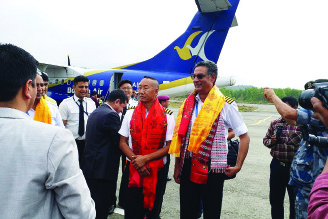 According to the stories of the Shri Swasthanibrat, when Lord Shiva was traveling with the corpse of this consort, Satidevi, her body parts fell one by one and the places where the body parts fell became holy sites. Shirsthan is believed to be where Satidevi's head fell, Navisthan is where her naval fell, Padukasthan is where her feet fell, Duleshwor is where her body fell and Kotila is where her mole fell. These sites are situated in Dailekh.
According to the stories of the Shri Swasthanibrat, when Lord Shiva was traveling with the corpse of this consort, Satidevi, her body parts fell one by one and the places where the body parts fell became holy sites. Shirsthan is believed to be where Satidevi's head fell, Navisthan is where her naval fell, Padukasthan is where her feet fell, Duleshwor is where her body fell and Kotila is where her mole fell. These sites are situated in Dailekh.
After exploring these sites, head to Surkhet and rest for the day there.
Day 6: Head towards Surkhet Airport to catch your flight to Kathmandu with fond memories of the Rara Lake and all the other destinations on the way.
This beautiful, serene and peaceful destination of western Nepal is nothing short of a great getaway with many great destinations to discover!
